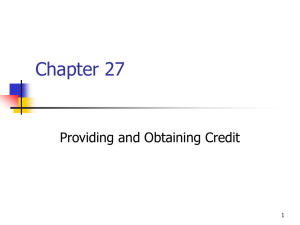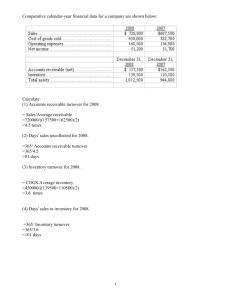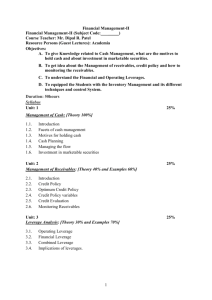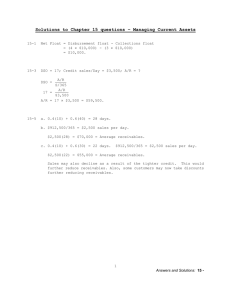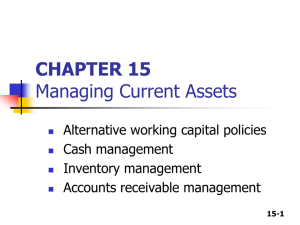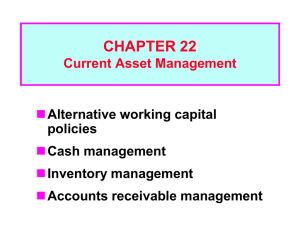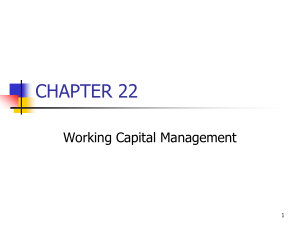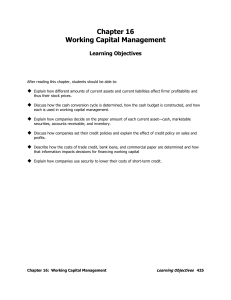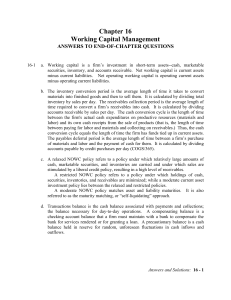Slide 1
advertisement
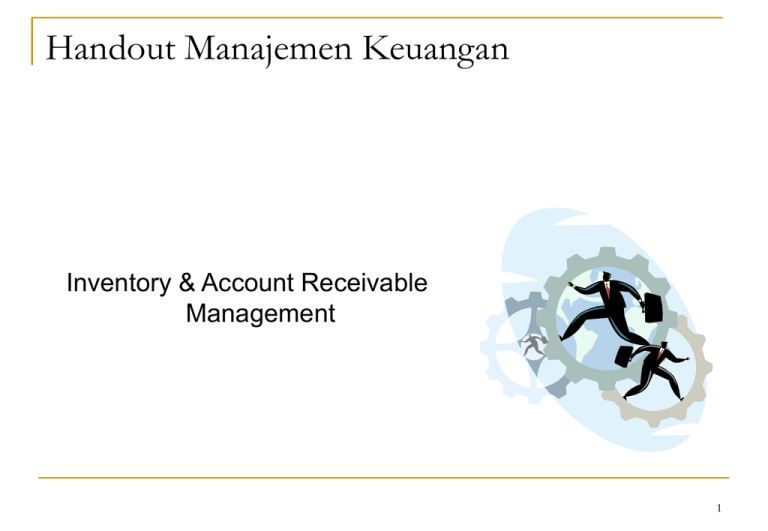
Handout Manajemen Keuangan Inventory & Account Receivable Management 1 Types of inventory costs Carrying costs – storage and handling costs, insurance, property taxes, depreciation, and obsolescence. Ordering costs – cost of placing orders, shipping, and handling costs. Costs of running short – loss of sales or customer goodwill, and the disruption of production schedules. Reducing the average amount of inventory generally reduces carrying costs, increases ordering costs, and may increase the costs of running short. 2 Types of inventory costs SKI’s inventory turnover (4.82) is considerably lower than the industry average (7.00). The firm is carrying a lot of inventory per dollar of sales. By holding excessive inventory, the firm is increasing its costs, which reduces its ROE. Moreover, this additional working capital must be financed, so EVA is also lowered. 3 If SKI reduces its inventory, without adversely affecting sales, what effect will this have on the cash position? Short run: Cash will increase as inventory purchases decline. Long run: Company is likely to take steps to reduce its cash holdings and increase its EVA. 4 Accounts Receivable Management ARs result from credit sales. The period is the average length of time firm a sale on credit until the payment becomes usable funds for the firm. 5 Accounts Receivable Management SKI’s DSO (45.6 days) is well above the industry average (32 days). SKI’s customers are paying less promptly. SKI should consider tightening its credit policy in order to reduce its DSO. 6 Elements of credit policy 1. 2. 3. 4. Credit Period – How long to pay? Shorter period reduces DSO and average A/R, but it may discourage sales. Cash Discounts – Lowers price. Attracts new customers and reduces DSO. Credit Standards – Tighter standards tend to reduce sales, but reduce bad debt expense. Fewer bad debts reduce DSO. Collection Policy – How tough? Tougher policy will reduce DSO but may damage customer relationships. 7 Does SKI face any risk if it tightens its credit policy? Yes, a tighter credit policy may discourage sales. Some customers may choose to go elsewhere if they are pressured to pay their bills sooner. 8 If SKI succeeds in reducing DSO without adversely affecting sales, what effect would this have on its cash position? •Short run: If customers pay sooner, this increases cash holdings. •Long run: Over time, the company would hopefully invest the cash in more productive assets, or pay it out to shareholders. Both of these actions would increase EVA. 9 Receivable Management Example McDowell Industries sells on terms of 3/10, net 30. Total sales for the year are $912,500. 40% percent of the customers pay on the 10th day and take discounts; the other 60% pay on average, 40 days after their purchases What is the days sales outstanding? What is the average amount of receivables? What would happen to average receivables if McDowell toughed up on its collection policy with the result that all nondiscount customers paid on the 30th day? 10 Receivable Management Example Solution: 0.4(10) + 0.6(40) = 28 days. $912,500/365 = $2,500 sales per day. $2,500(28) = $70,000 = Average receivables. 0.4(10) + 0.6(30) = 22 days. $912,500/365 = $2,500 sales per day. $2,500(22) = $55,000 = Average receivables. Sales may also decline as a result of the tighter credit. This would further reduce receivables. Also, some customers may now take discounts further reducing receivables. 11
